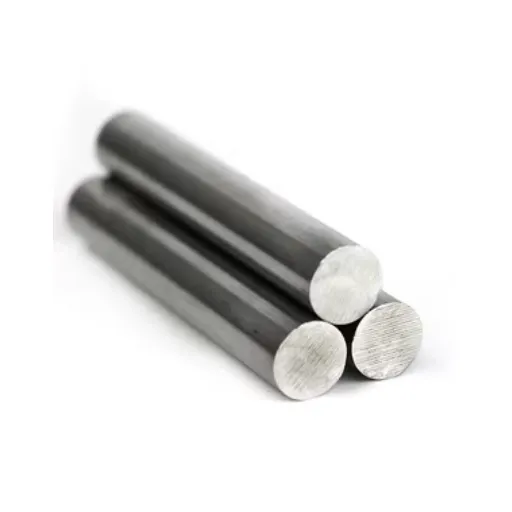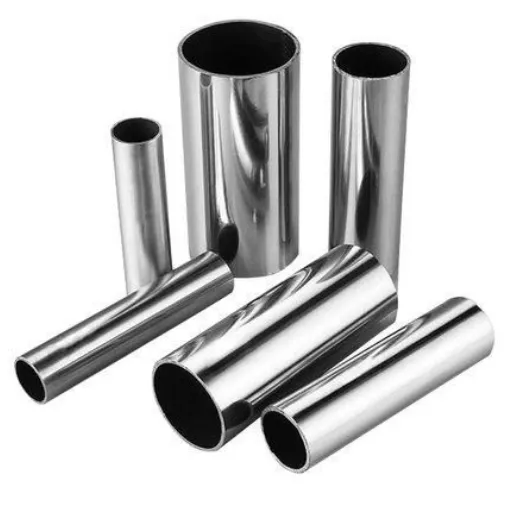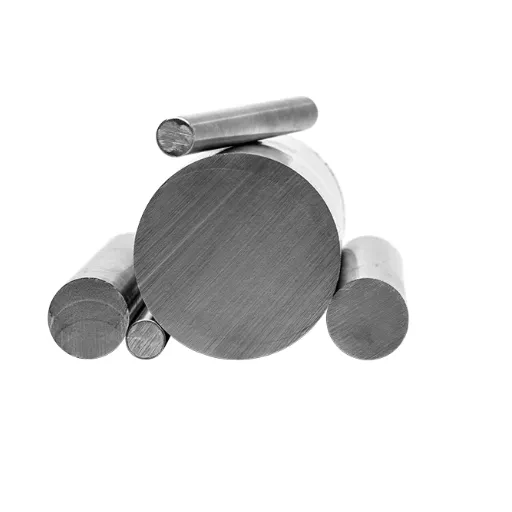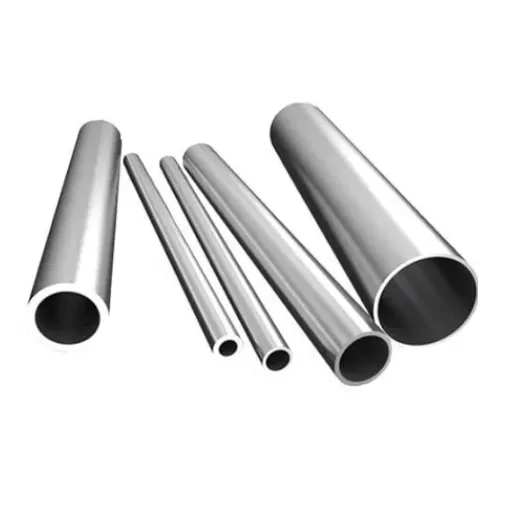In project work, the problem often becomes alloy steel or stainless steel. In general, both materials, due to their potency, durability, and versatility, have distinct properties that should be appropriately chosen for specific applications. This article provides a guide that highlights the key differences between alloy and stainless steel, enabling you to make an informed choice based on factors such as composition, performance, cost-effectiveness, and outcomes. Applications are the steel story to be known that will decide the success and longevity of the project in architecture, machinery, or consumer goods.
Understanding Alloy Steel and Stainless Steel
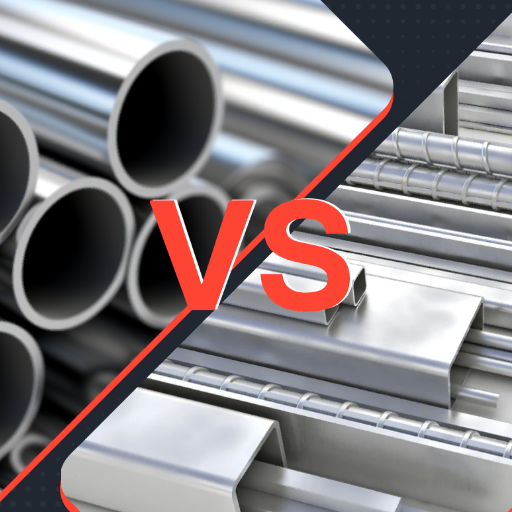
Alloy steel refers to steels that have been modified through the addition of alloying elements, such as chromium, nickel, manganese, vanadium, and molybdenum, to enhance their mechanical properties. The primary objective is to provide improved strength, toughness, wear resistance, and corrosion resistance, depending on the specific application. More frequently, alloy steels are used in structural components, automotive parts, and tools due to their flexibility and adaptability to various conditions. However, stainless steel provides a better rust-resistant capacity with corrosion.
The stainless steel is distinguished by its high concentration of chromium, typically exceeding 10.5%, which enables the formation of a thin, transparent oxide layer of protection on the stainless steel surface. This oxide layer is the reason stainless steel is highly corrosion-resistant, especially in moist and wet environments, in environments containing certain aggressive chemicals, or in environments with extreme temperatures. Stainless steel is also very durable, hygienic, and aesthetically pleasing, which has therefore facilitated its continued application in the building sectors, kitchen hardware, medical equipment, and food processing. Usually, stainless steel is more expensive than alloy steel, but in many cases, its performance over time compensates for the initial investment.
Composition of Alloy Steel
Using a specific metal, Alloy steel is created when various alloying elements, in addition to carbon and iron, are added to enhance mechanical properties and behavior under particular circumstances. Higher alloying elements can be manganese, chromium, nickel, molybdenum, vanadium, silicon, and boron. These elements are mixed in such a concentration that they impart the preferred properties of strength, hardening, and resistance to wear and toughness. Less chromium serves as a barrier to corrosion and oxidation resistance; instead, nickel enhances toughness and impact strength at low temperatures. Molybdenum, on the other hand, yields better high-temperature strength and resistance to softening during heat treatment. The precise composition of alloy steel provides guidelines for fine-tuning in various industrial applications, including automotive, construction, energy, and aerospace, to achieve specialized performance.
Composition of Stainless Steel
Stainless steel falsely generalizes a group of alloys, with the major constituents being iron, chromium, and carbon, with the addition of nickel, molybdenum, and manganese as and if required for some special properties. What defines stainless steel primarily is its chromium content, typically ranging from 10.5% to 30%. Chromium, in the presence of atmospheric oxygen, forms an oxide layer on the steel surface, and this layer is so thin and adherent that it hardly interferes or inhibits its function as steel. It is this oxide layer that makes stainless steel resistant to corrosion. Usually, nickel is added to give it an austenitic structure, good ductility, and toughness, as well as resistance to acid attack. Molybdenum offers resistance to pitting and crevice corrosion, which is more accentuated in chloride environments. Other trace elements, such as nitrogen, add to the strength and hardening. Such a perfect synergy of elements imparts to stainless steel premium strength, which finds application in industries such as healthcare, chemical processing, architecture, and the food industry, where different grades of steel are critical to corrosion resistance and some are candidates for hygiene requirements.
Key Alloying Elements
- Chromium (Cr): Chromium is the bare alloying element that imparts corrosion resistance to stainless steel. It prevents corrosion owing to the formation of a passive oxide film on the surface-to protect the material from environmental conditions such as moisture and oxygen stressors. Normally, stainless steel contains chromium content upwards of 10.5% to foster protection and further resistance against the harder environments.
- Nickel (Ni): This enhances the toughness, strength, and ductility of stainless steel at low temperatures. It can also impart resistance against acidic and caustic solutions, which is highly important in chemicals and marine areas. The stabilization of the FCC structure in austenitic grades is greatly contributed by nickel.
- Molybdenum (Mo): Generally present in quantities ranging from approximately 2% to 3%, molybdenum significantly enhances resistance to localized corrosion types, such as pitting and crevice corrosion. This element is much more critical in environments bearing chloride: by the chloride-bearing environment, they mean seawater exposure as well as industrial applications dealing with Brine or chloride-based chemicals.
- Nitrogen (N): It contributes to strengthening the mechanical properties such as ultimate tensile strength and yield strength; furthermore, it improves corrosion resistance in stainless steels, especially in reduced environments and narrow crevices by stabilizing the austenitic structure.
- Carbon (C): Its presence is limited because it is expected to form carbides, inhibiting corrosion through the surface. However, a trim controlled level of carbon present can assist in strength and hardness, with carbon in low concentrations being found in alloys with the letter L in their names (304L) to avoid these adverse effects while maintaining other factors.
- Manganese (Mn): Manganese substitutes nickel in some grades of stainless steel to make it cheaper but with no loss of strength and corrosion resistance. It also improves hot-working properties and deoxidation during steelmaking.
- Silicon (Si): When added in small quantities, it improves oxidation resistance and, at the same time, enhances steel performance under elevated temperatures. It also helps in processing by acting as a flux in molten steel.
Properties of Alloy Steel and Stainless Steel
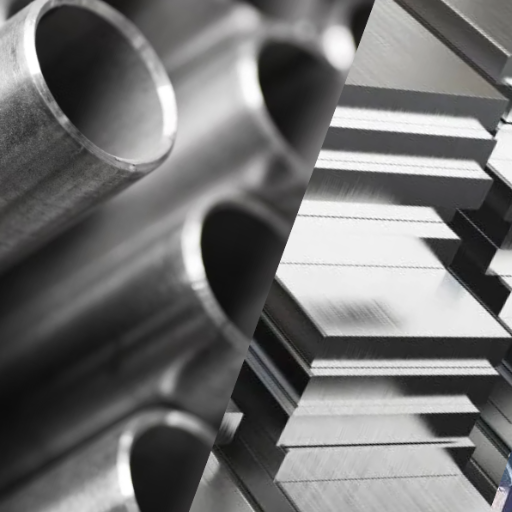
Properties of Alloy Steel:
- Strength and Durability: Alloy steel exhibits enhanced strength and durability and is utilized by the manufacturing industry for highly specialized applications in construction and automotive parts.
- Corrosion Resistance: The presence of elements like chromium and iron increases its resistance against rust and oxidation, thereby increasing the life span of the material in corrosive feigns.
- Hardness and Wear Resistance: Alloy steel exhibits superior hardness and wear resistance, which is essential for tools and machinery subjected to high friction or abrasive forces.
- Versatility: It can be modified to suit any purpose by varying the type and amount of alloying element, thereby providing engineering design with complete freedom.
Properties of Stainless Steel:
- Corrosion Resistance: Stainless steel is an excellent choice in resisting corrosion, which in turn forms a passive oxide layer that protects it from rust.
- Hygienic and Aesthetic Properties: Stainless steel features a smooth surface, making it easy to clean, which is particularly beneficial in fields where hygiene is crucial, such as medical and food-processing equipment.
- Heat Resistance: Stainless steel withstands high temperatures, making it suitable for use in heat exchangers, furnace components, and other applications.
- Toughness: It exhibits very high toughness, resisting impact without fracturing even under extreme situational conditions.
Strength and Durability
With a capability of corrosion resistance, stainless steel boasts of an exceptional strength-to-weight ratio, which makes it an imperative material in industrial and architectural sectors. Under immense mechanical stress, it is further endowed with the ability to maintain structural integrity and thus withstand the rigors of highly demanding applications, including construction frameworks, automotive components, and aerospace designs. With the recent advancements in metallurgical processes for developing duplex stainless steels, this stainless steel has been introduced with relatively greater tensile strength and resistance to fatigue. The advancements enable this stainless steel to be exploited reliably under cyclical stresses or any form of heavy loading environment. Besides resisting creep under higher temperatures, it is also known to require very low maintenance costs and can thus be considered a highly durable and cost-effective material throughout its service life.
Corrosion Resistance
Stainless steel is so resistant because of the chromium oxide passive layer formed on its surface. This chromium oxide thin layer is very thin and acts as a shield, preventing oxidation of the steel caused by oxygen and moisture. A chromium content of at least 10.5% is more or less compulsory to achieve this property; alloying with molybdenum and nickel further increases the resistance of stainless steel against extremely corrosive agents like chlorides, acids, and saltwater. For instance, varieties such as SS grade 316 and duplex are stainless steel types made to perform excellently in hostile environments such as marine and chemical processing applications. Further development in alloy design has yielded even better pitting and crevice corrosion resistance stainless steel, so these may be employed where exposure to highly aggressive chemicals and extreme humidity is often encountered, such as in desalination plants and offshore structures. This high resilience is very important in industries that value material durability and integrity.
Machinability Comparison
Applications of Alloy Steel vs Stainless Steel
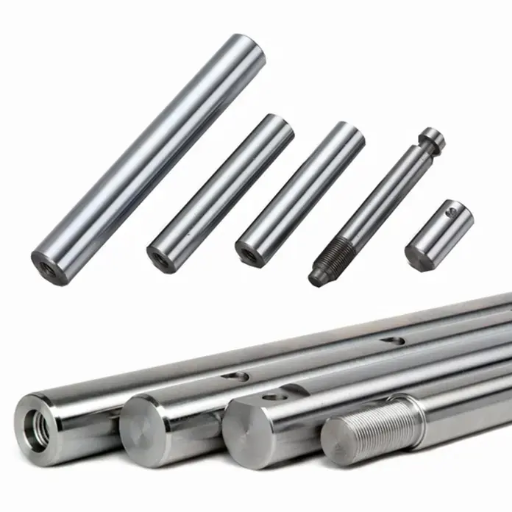
Alloy Steel Applications:
- Automotive Components: From an alloy steel use-potential perspective, gears, shafts, axles, and crankshafts are produced all in all, maintaining a conversely high strength-weight ratio and good fatigue resistance.
- Construction: High-strength, low-alloy (HSLA) steels are used for structural members, bridges, and reinforcement bars because of their high durability and loading capacity.
- Power Generation: In thermal and nuclear power plants, heavy components such as turbine blades and rotors are treated with alloy steel to resist high stresses and temperatures.
- Oil and Gas Industry: It is a kind of alloy steel piping and tubing and valves for sour service-alloy steel-based systems resisting corrosion and hydrogen sulfide environments.
Stainless Steel Applications:
- Medical Devices: Surgical instruments, implants, and medical equipment benefit from stainless steel’s biocompatibility and resistance to sterilization processes.
- Food and Beverage Industry: Stainless steel is standard in processing equipment, tanks, and kitchen utensils due to its ease of cleaning and non-reactivity with food products.
- Chemical and Pharmaceutical Industries: Stainless steel is used in reactors, storage tanks, and piping systems to combat corrosion from aggressive chemicals.
- Marine Applications: Marine Application propeller shafts, fasteners, and fittings use stainless steel, especially grade 316L, to withstand corrosion in a saltwater environment.
Industries Utilizing Alloy Steel
- Automotive Industry: Considered very extensively for the manufacture of major automotive machinery, especially gears, crankshafts, axles, and engine parts. Due to its exceptional strength, toughness, and wear-resistant properties, it is most suitable for applications where hardness is required in the presence of stress and impact.
- Construction Sector: The construction industry heavily depends on alloy steels for structural applications such as beams and rebar and for framework. Ability to bear heavy loads and high tensile strength is valued lots in high-rise buildings, bridges, and the realization of other infrastructures.
- Aerospace and Defense: Alloy steel’s excellent strength-to-weight ratio and resistance to fatigue make it of utmost importance in aerospace and defense. Used in aircraft landing gear, turbine components, and missile systems, the data demands application performance competing with the specifics of reliability under extreme conditions.
- Energy Sector: Steel alloys find use within energy generation and distribution applications in turbine blades, pipelines, boiler systems, etc. With great resistance to high pressures and temperatures, they remain among the indispensable materials in fossil fuels, nuclear, and renewable energy systems.
- Tool and Die Industry: Thanks to its hardness and good machining properties, alloy steel can be used for manufacturing cutting tools, dies, and molds. These require precision, and wear resistance is guaranteed to functionality and longevity.
Common Uses of Stainless Steel
- Construction and Architecture: Due to the corrosion resistance observed in stainless steels, they find extensive usage in construction. It is used for structural elements, building facades, and contemporary architectural concepts, where the strength and aesthetic appeal of stainless steel are highly valued.
- Food and Beverage Industry: Owing to its hygienic properties, stainless steel is preferred in the manufacture of food processing machinery, appliances, and storage tanks. Its non-porous surface deprives bacteria of an opportunity actually to harbor, thus ensuring the requirements set aside under strict sanitation standards.
- Medical and Pharmaceutical Applications: Due to their biocompatibility, stainless steels are used in the production of medical devices and surgical instruments, orthopedic implants, and hospital-grade furniture, thereby establishing sterile environments and ensuring the long-term viability of their equipment.
- Automotive and Transportation: Stainless steel is used in the automotive industry for exhaust systems, trim, and structural components. Its resistance to heat and corrosion ensures durability under challenging operating conditions, while its lightweight properties contribute to improved fuel efficiency.
- Energy and Power Generation: Stainless steel is vital in energy sectors, particularly in the construction of boilers, heat exchangers, and piping systems. Its ability to withstand extreme environments, including exposure to high-pressure steam and caustic materials, ensures operational efficiency and longevity.
Key Differences Between Alloy Steel and Stainless Steel
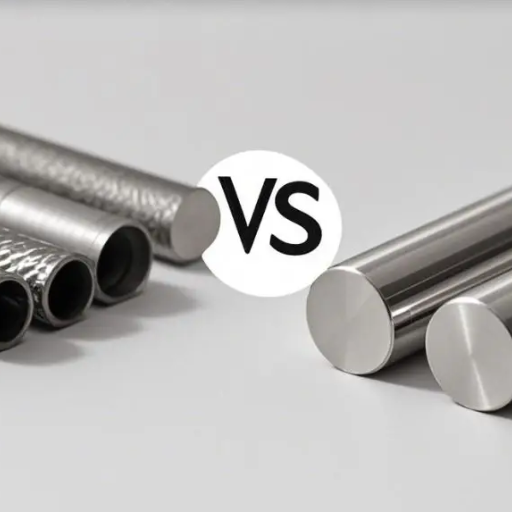
- Composition:
Alloy steels are primarily manufactured by adding alloying elements to carbon steel to enhance their mechanical properties. Stainless steels contain not less than 10.5% chromium, which imparts corrosion resistance.
- Corrosion Resistance:
Due to the chromium content of stainless steel, it is highly resistant to rust and corrosion, making it suitable for use in environments where moisture or chemicals are present. Alloy steel offers moderate corrosion resistance, and additional coatings or treatments can further enhance it.
- Applications:
Alloy steel, for the most part, is used in automotive, aerospace, and structural applications where high strength and durability are required. Stainless steel, however, is required where hygiene and corrosion resistance are vital, such as in medical instruments, kitchenware, chemical processing, and chemical handling.
- Cost:
- Maintenance:
Comparing Alloy Steel and Stainless Steel
|
Parameter |
Stainless Steel |
Alloy Steel |
|---|---|---|
|
Corrosion Resistance |
High resistance due to chromium content |
Moderate, may require coatings |
|
Strength |
Strong, but less than some alloy steels |
High variability, can be stronger |
|
Cost |
More expensive due to composition |
Relatively cost-effective |
|
Maintenance |
Minimal, natural corrosion resistance |
May need regular care and coatings |
|
Durability |
Extremely durable in harsh environments |
Durable but environment-dependent |
|
Hardness |
Offers moderate hardness |
Can be engineered for high hardness |
|
Machinability |
Harder to machine due to toughness |
Often easier to machine |
|
Heat Resistance |
Sustains higher temperatures |
Limited unless treated for heat resistance |
|
Weldability |
Challenging, needs specific techniques |
Easier to weld in most cases |
|
Applications |
Common in food, medical, and architecture |
Widely used in automotive and construction |
Performance in Different Environments
Carbon steels are inherently hard and adaptable. However, without coatings or treatments, the risk of rust in humid or corrosive environments is very high; thus, the limitations of carbon steels in damp or coastal areas. In areas not prone to high moisture, carbon steel stands out in the design and construction of industries owing to its high durability and inexpensive nature.
Cost Considerations
Choosing the Right Steel for Your Needs
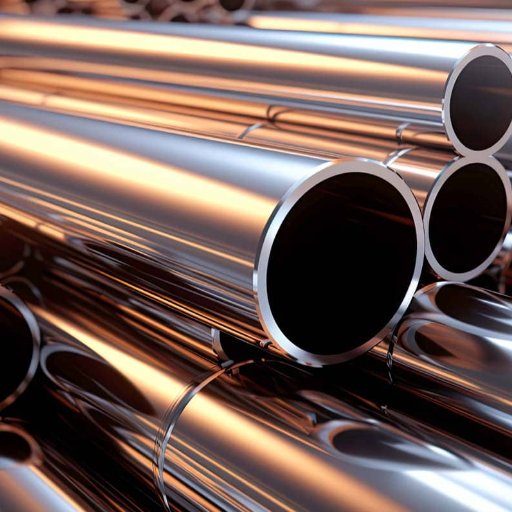
Determining what steel is best suited for one’s needs begins with outlining the specific factors to consider in the application. An assessment of mechanical strength, susceptibility to environmental changes, weight requirements, and potential for wear and tear should be included. In cases requiring high strength and durability, generally, alloy steels are an excellent option with improved performance features. What’s important here is whether corrosion resistance ranks high on the list; if it does, choosing stainless steels with their chromium content would guarantee resistance to harsh environments. Another factor to consider is, of course, cost: carbon steels are the practical option if the application involves no overly harsh environmental stresses. These kinds of choices should be transparent, allowing for the right compromises; therefore, material specifications or industry standards should be used to ensure that the steel meets the project’s functional and economic objectives.
Guidance for Industrial Applications
Selecting the most suitable steel for industrial applications necessitates a thorough examination of operating conditions, mechanical requirements, and anticipated long-term performance expectations. For elevated temperatures, Cr-Mo steels are widely employed due to their creep resistance and thermal stability. Conversely, for low temperatures or cryogenic work, AISI 304L or 316L types of austenitic stainless steels are preferred, given their superior toughness and ductility at sub-zero temperatures.
For manufacturing processes that involve heavy wear or abrasion, wear-resistant steels such as AR400 or AR500 are recommended. They permit high hardness levels and superb durability under constant friction or impact of wear. Industries with high demands for corrosion resistance, such as the marine or chemical processing industries, can also rely on duplex stainless steels, which balance strength with corrosion resistance through their dual-phase microstructure.
When selecting a suitable material, it is crucial to assess the performance and compliance records established by ASTM, EN, or ISO standards. In addition, the engineer should also consider weldability, machinability, and maintenance costs, thereby contributing to the performance required for an industrial application. The correct selection of materials, combined with necessary design standards and safety regulations, will ensure efficient results and operational excellence.
Personal Projects and Home Use
Reference Sources
1. Effect of Austenitic Stainless Steel Cladding on High-Temperature Oxidation Resistance: Austenitic stainless steel cladding significantly enhances the high-temperature oxidation resistance of ferritic 2.25Cr-1Mo steel. Oxidation resistance improves with increasing temperature (850°C to 950°C) and time, but uncoated samples show higher oxidation rates.
3. Interface Structure and Element Diffusion in Ductile Iron/Stainless Steel Bimetal Castings: Low-temperature annealing (720°C) significantly affects the interface structure and element diffusion in ductile iron/304 stainless steel bimetal castings. Annealing transforms pearlite to spheroidal cementite in the interface, increasing carbon diffusion but minimally affecting chromium and nickel diffusion.
Frequently Asked Questions (FAQs)
Q: What is the difference between alloy steel and stainless steel?
A: The primary difference between alloy steel and stainless steel lies in their composition. Alloy steel is a type of steel that contains various alloying elements such as manganese, nickel, or chromium, which enhance its mechanical properties. On the other hand, stainless steel is an alloy of iron and carbon that contains a minimum of 10.5% chromium, providing excellent corrosion resistance. While both types of steel have their unique advantages, stainless steel is known for its ability to resist rust and corrosion compared to alloy steel. When choosing between alloy and stainless steel, consider factors like strength, corrosion resistance, and the specific requirements of your project.
Q: How does corrosion resistance compare between alloy steel and stainless steel?
A: Stainless steel is highly resistant to corrosion due to its high chromium content, which forms a protective layer on the surface. In contrast, alloy steel usually has lower corrosion resistance and may require additional coatings or treatments to improve its durability. Stainless steel can withstand harsh environments better than alloy steel, making it ideal for applications in marine or chemical industries. However, certain types of alloy steel can be engineered for improved corrosion resistance, but they still do not match the performance of stainless steel. When corrosion resistance is a priority, choosing the right stainless steel grade is crucial.
Q: What types of stainless steel are available?
A: There are several types of stainless steel, including austenitic, ferritic, and martensitic stainless steel. Austenitic stainless steel, such as 304 stainless steel, is known for its excellent corrosion resistance and formability, making it suitable for kitchen appliances and food processing equipment. Ferritic stainless steel is magnetic and offers good corrosion resistance but less formability, while martensitic stainless steel is known for its hardness and strength, often used in knife blades and tools. Each type of stainless steel has unique properties that make them suitable for specific applications, and understanding these differences is essential when selecting the right stainless steel for your project.
Q: Is alloy steel harder than stainless steel?
A: In general, alloy steel can be harder than stainless steel, depending on the specific composition and heat treatment processes used. Alloy steel is often engineered to achieve higher hardness levels, making it suitable for applications requiring high strength and wear resistance. However, some stainless steel grades, particularly martensitic stainless steel, can also be hardened and may exhibit comparable hardness to alloy steel. When considering hardness, it is essential to evaluate the specific type of alloy steel or stainless steel, as well as their intended application. Choosing the right steel involves assessing not only hardness but also other factors such as corrosion resistance and ductility.
Q: How do I choose between alloy steel and stainless steel for my project?
A: Choosing between alloy steel and stainless steel depends on several factors, including the environmental conditions, required mechanical properties, and budget constraints. If corrosion resistance is a priority, stainless steel is typically the better choice due to its excellent resistance to rust and oxidation. However, if strength, toughness, and cost-effectiveness are more critical, alloy steel may be the suitable option. Consider the specific type of steel needed for your application, such as low alloy steel for general purposes or high alloy steel for demanding environments. Evaluating the key differences between alloy steel and stainless steel will help you make an informed decision that meets your project’s requirements.

